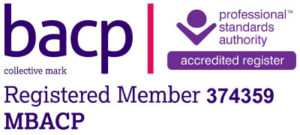Panic attacks are surprisingly common: research shows that at least one in three of us will experience one at some point in our lives. Symptoms vary from person to person, and can include a pounding heart, shortness of breath, light-headedness, sweating, trembling, nausea, tingling or numbness in the fingers and toes, and an overwhelming sense of impending doom. Sometimes we can wake up in the morning — or even in the middle of the night — to find that our body is already in full-blown, heart-racing panic.
For many people, these alarming sensations — which can mimic those of a heart attack — are accompanied by a conviction that they are about to die. For others, there’s a sensation of “unreality,” where time and perception become scrambled: sounds may sound different, you may feel like you’re in a tunnel and things are far away, and colours may seem different. People sometimes describe it as an out-of-body experience and feel like they’re going to lose control.
Despite how terrifying and memorable these episodes can be, they are not inherently dangerous. Instead, panic attacks are a manifestation of a normal physiological fear response happening at a totally inappropriate time.
During a panic attack your threat response has been triggered and your body and brain react as if your life is in danger (even though it isn’t), preparing for “fight, flight, or freeze”. Sometimes panic might start in your body itself, and then create processes within your brain. Other times, your brain could initiate the entire onset of a panic attack, which then manifests itself in your body. But once an attack is triggered, the cascade of physiological responses in the body is universal. Often, it begins with something that causes your heart to race. This might be a stimulus in the environment — perhaps a sound or a scent that you associate with a traumatic event — or even something as innocuous as a jolt of caffeine. In a panic attack, the racing heart sets off the fire alarm in your brain and sends your body’s threat response into overdrive.
This results in your bloodstream being flooded with stress hormones (like adrenaline and cortisol) which engage your body’s survival reflexes and ready it to take defensive action. Your pupils dilate, and your mind becomes laser focused. Your breathing rate increases, allowing your body to take in extra oxygen. Cellular metabolism shifts to maximize the amount of glucose available to the brain and muscles. Your blood is diverted away from non-essential regions like you fingers, toes and stomach and towards the major muscles of the arms and legs — steeling them to either fight off a threat or flee the scene (or freeze i.e. pass out, if neither fleeing or fighting are possible).
To be classed as a panic attack, symptoms must come on rapidly, or within a few minutes, and they typically peak and subside within 10 or 15 minutes. So, how can we hit the brakes? Recognizing your experience as a panic attack and not a more serious medical crisis, and gently reminding yourself that there’s nothing physically unsafe about it, helps: Panic always passes, and focusing on that belief can send it on its way.
Of course, this is easier said than done when you feel like you’re suffocating or losing control. It takes practice, but the more you do it, the better you get at doing it. If you can, find a quiet spot where you can talk yourself through why you’re feeling what you’re feeling: “I’m feeling light-headed because my blood is being redirected to my limbs. I’m breathing hard because my body is responding in an evolutionarily honed, biologically correct way. Everything my body is doing now is designed to keep me safe and protect me”. When you do this, you’re inviting another region of your brain into the conversation: your cortex, which is responsible for conscious thought, judgement and problem solving. Bringing a sense of curiosity to the way you observe your sensations can help you to underline that they are just transient physical processes moving through you.
The other major tool in your toolbox is your breath. Most of us breathe on average from 12 to 20 breaths a minute, and when we’re hyperventilating, we easily double that. So, trying to gradually slow your breathing to between 5 and 10 breaths per minute, and aiming to make your exhales longer than your inhales really helps as it engages a parasympathetic response which can help to end your “fight, flight, or freeze” threat response and bring you back to homeostatic balance and “rest-and-digest” mode. Basically, panic attacks are just fear of fear, and by breathing in a slow, controlled manner, you send a powerful signal to your brain that you’re relaxed and there ‘s nothing to fear. In turn, this stimulates certain parts of your heart muscle and helps to steady your pulse.
When practiced regularly, longer-term practices such as mindfulness meditation, which are often built around a core of breathing techniques, can help you quash attacks before they take hold, as they teach you a new association with your visceral experiences. Focusing intently on your breath and heartbeat in a relaxed setting can help us shake off any reflexive jump to panic when we speed up in everyday life. And therapy can help too.




